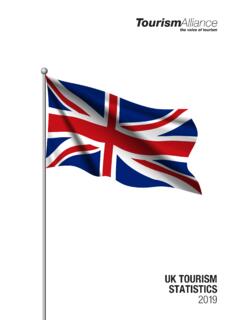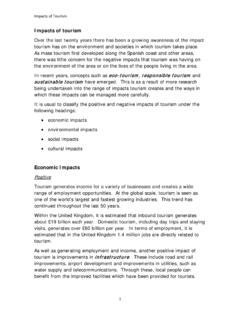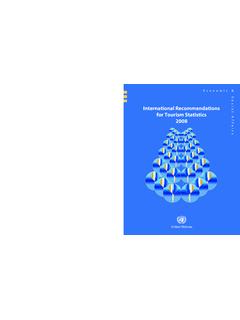Transcription of Accessibility and inclusion of persons with disabilities ...
1 Accessibility and inclusion of persons with disabilities in Urban Development 1. About billion people, 15 per cent of them persons with disabilities , are predicted to be living in urban centres by 2050. Urbanization has the potential to be a great engineer for achieving sustainable and inclusive development for all. The current lack of environmental Accessibility 2 faced by people with disabilities in particular in many cities in the world presents both a major challenge and strategic opportunity to promote an accessible and inclusive Urban Agenda, as the international community prepares for the 3rd Global Conference on Housing and Sustainable Development (Habitat III), which will take place in Quito, Ecuador in October 2016.
2 A sustainable and inclusive New Urban Agenda would be greatly supported by promoting Accessibility following universal design approaches and disability inclusion . This requires strong commitments in concrete terms including in particular, inclusive urban policy, regulatory norms and standards, universal design 3 approached planning, allocation of necessary resources, and a broad-based partnership that involves and engages all community members, including persons with disabilities . Accessibility and inclusion of persons with disabilities in development Urbanization is currently one of the most important global trends of the 21st century.
3 Urbanization has a great potential to be a great engineer to achieve sustainable and inclusive development for all. About billion people, 15 per cent of them with disabilities , are predicted to be living in urban centres by 2050. 4 Urban environments, infrastructures, facilities and services, depending how they are planned and built, can impede or enable access, participation and inclusion of members of society. For the 15 per cent of the world's population who live with a disability, (many of whom live in urban areas), available evidence reveals a widespread lack of Accessibility to built environments, from roads and housing, to public buildings and spaces and to basic urban services such as sanitation and water, health, education, transportation, and emergency and disaster response and resilience building and access to information and communications.
4 These Accessibility limitations contribute greatly to the disadvantage and marginalization faced by persons with disabilities , leading to disproportionate rates of poverty, deprivation and exclusion. This situation also impedes the realization of the 2030 Agenda for Sustainable Development and other internationally agreed development goals. 1. The author at the Secretariat for the Convention on the Rights of persons with disabilities , Division for Social Policy and Development of Department of Economic and Social Affairs ( DESA) of the United Nations would like to extend special appreciation to the inputs received from may contributors especially those from the offices of UN-Habitat and the Secretary-General's Special Envoy on Disability and Accessibility for this paper.
5 Comments and inquiries shall addressed via email to : 2. Accessibility , in this publication, refers to a feature or quality of any physical or virtual environment, space, facility or service that is capable of accommodating the needs of users of varying abilities or disabilities to understand, get access to or interact with . In a rather narrow sense, Accessibility also refers to technical standards that are mandated nationally or internationally for the design and construction of a physical or virtual environment, space, facility and service.
6 3. 166 countries and the european union are currently States Parties to the CRPD. According to the Convention on the Rights of persons with disabilities , Article 2, Universal design means the design of products, environments, programmes and services to be usable by all people, to the greatest extent possible, without the need for adaptation or specialized design. Universal design shall not exclude assistive devices for particular groups of persons with disabilities where this is needed. 4. The World Urbanization Prospects (2014).
7 United Nations Department of Economic and Social Affairs. International policy frameworks require States to promote Accessibility and disability inclusive development The current international policy framework guiding disability-inclusive urban development is largely based on a number of instruments concerning persons with disabilities . The World Programme of Action concerning Disabled persons views Accessibility as an essential means to further its goals of full participation and equality . The Standard Rules on the Equalization of Opportunity for persons with disabilities identifies Accessibility of the physical environment and of information and communication as two target areas to ensure equalization of opportunities.
8 The Convention on the Rights of persons with disabilities (2006) further strengthened the international normative framework for the advancement of the rights and socio-economic development of persons with disabilities . Accessibility is established in the Convention as a cross-cutting issue that enables persons with disabilities to live independently and participate fully in all aspects of life. The Convention has a standalone article ( Article 9) and a number of other provisions, including article 19 (living independently and being included in the community), article 20 (personal mobility) and article 21 (freedom of expression and access to information), that provides detailed guidance on measures that States shall take in terms of advancing Accessibility .
9 It shall be highlighted that, under the Convention on the Rights of persons with disabilities , States parties 5 have a general obligation to undertake or promote research and development of universally designed goods, services, equipment and facilities, as defined in article 2 of the Convention, which should require the minimum possible adaption and the least cost to meet the specific needs of a person with disabilities , to promote their availability and use, and to promote universal design in the development of standards and guidelines.
10 6 And to enable persons with disabilities to live independently and participate fully in all aspects of life, States Parties shall take appropriate measures to ensure to persons with disabilities access, on an equal basis with others, to the physical environment, to transportation, to information and communications, including information and communications technologies and systems, and other facilities and services open or provided to the public, both in urban and in rural areas. 7. In 2013, the United Nations High-level Meeting on Disability and Development and its action-oriented Outcome Document 88 stressed the importance of ensuring Accessibility for and inclusion of persons with disabilities in all aspects of development and giving due consideration to all persons with disabilities in the 2030 Agenda for Sustainable Development.















